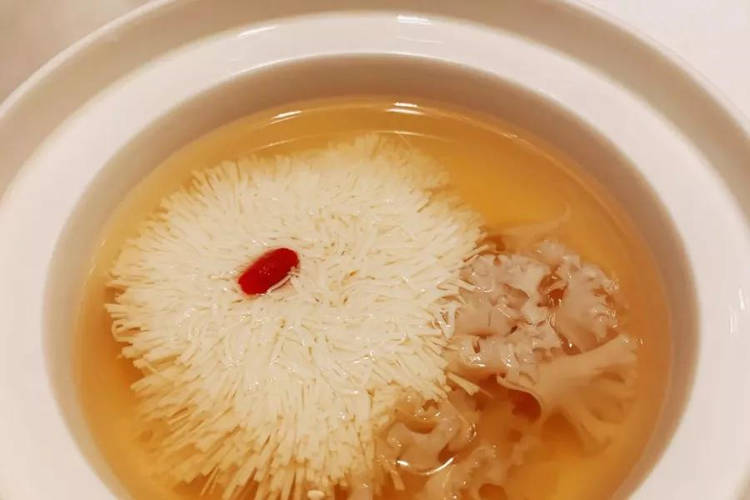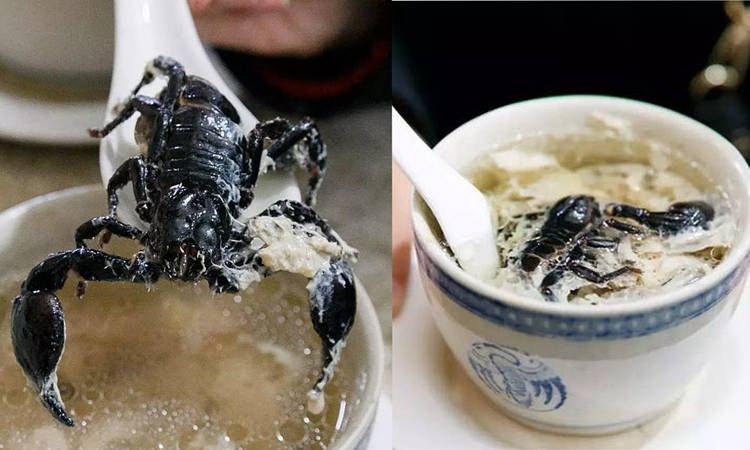A staple of Huaiyang cuisine, hydrangea tofu soup is a testament to the impressive knife-cutting skills of chefs specializing in this type of Chinese cuisine.
Looking at a bowl of hydrangea tofu soup for the first time, you’d be forgiven for mistaking the slender tendrils swaying in chicken broth for anything but tofu. It looks like a white hydrangea, hence the name of the dish, but it could also be some sort of edible sea anemone. In reality, it’s a block of soft tofu carefully cut 60 times in one direction, then turned around and cut another 60 times in order to create 3,600 delicate tendrils. It’s challenging to make, as the tofu needs to be sliced just three-fifths in, otherwise, it will break apart and the flower illusion will be ruined.









